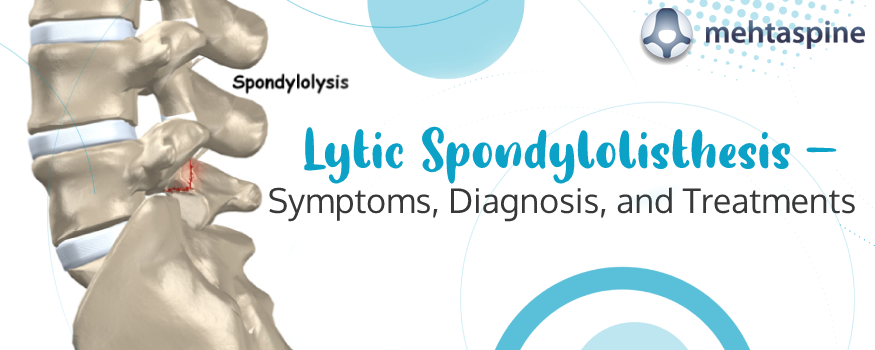Lytic Spondylolisthesis – Symptoms, Diagnosis, and Treatments
Lytic Spondylolisthesis happens due to the stress fracture of pars interarticularis which is a tiny bridge between the facet joints in the bony area of the spine. It is one of the most common causes of back pain in the UK and what makes it important is that it doesn’t show itself until many years down until symptoms reflect.
Owing to different types of spinal conditions like Spondylosis, Spondylitis, Spondylolysis and Spondylolisthesis there seems to be a lot of confusion about this specific condition. So in this blog, we are going to provide all the required information about Lytic Spondylolisthesis – its symptoms, diagnoses and also its treatment in the UK. Read on:
Anatomy of Lytic Spondylolisthesis:
The spine in simple terms is a bony canal that houses our spinal cord. This bony tunnel is made up of disks and individual bone segments with facet joints. These facet joints are linked together with a tiny bridge called pars interarticularis to form a tunnel. Over time due to consistent stress caused by repetitive physical activities, this tiny bridge may develop cracks or break on one side or both sides resulting in Lytic Spondylolisthesis.
What causes Lytic Spondylolisthesis?
Gymnastics, bowling in cricket, weight lifting, football and other physical activities or sports that overtime put a lot of stress on the back may increase the chance of lytic Spondylolisthesis. Research also indicates that there might be a genetic and hereditary aspect that might increase the chances of this condition.
Symptoms of Lytic Spondylolisthesis:
As said earlier, the Lytic Spondylolisthesis can be asymptotic at the beginning, only showing up when the condition gets severe. Common symptoms of Lytic Spondylolisthesis include back pain, leg pain or sciatic pain.
When the break is severe, the discs may slip resulting in nerve pinching which leads to a variety of symptoms that include pain, numbness, and increased sensitivity, pain in the legs or even muscle weakness.
Diagnosis and Treatment for Lytic Spondylolisthesis in UK:
While the condition itself can be asymptotic for a certain period, even the symptoms like back pain, leg pain, or causes like nerve compression are like a wide variety of spine problems. So the diagnosis of Lytic Spondylolisthesis needs a trained set of eyes of a back pain specialist and orthopaedic spine surgeon in the UK to accurately diagnose and assess the condition to recommend the appropriate treatment. Only after extensive consultation, medical imaging studies tests and scans an orthopaedic spine surgeon can determine the incidence and severity of Lytic Spondylolisthesis.
After assessing the extent of the injury to the tiny bridge a customized spondylolisthesis treatment plan is developed by the orthopaedic spine surgeon. If the condition is mild, physiotherapy and medications are used to relieve the pain and improve the quality of life of the patient. Only when the conservative non-surgical treatment fails to reduce the symptoms, surgery is recommended to repair the stress fracture or treat the slippage based on the specific condition.
If you need more information on Lytic Spondylolisthesis or are looking for consultation in Birmingham, you can contact Children and Adult Spinal Surgeon Mr Jwalant S Mehta here: Clinical secretary: Samantha Leavy +44 785 021 1939


